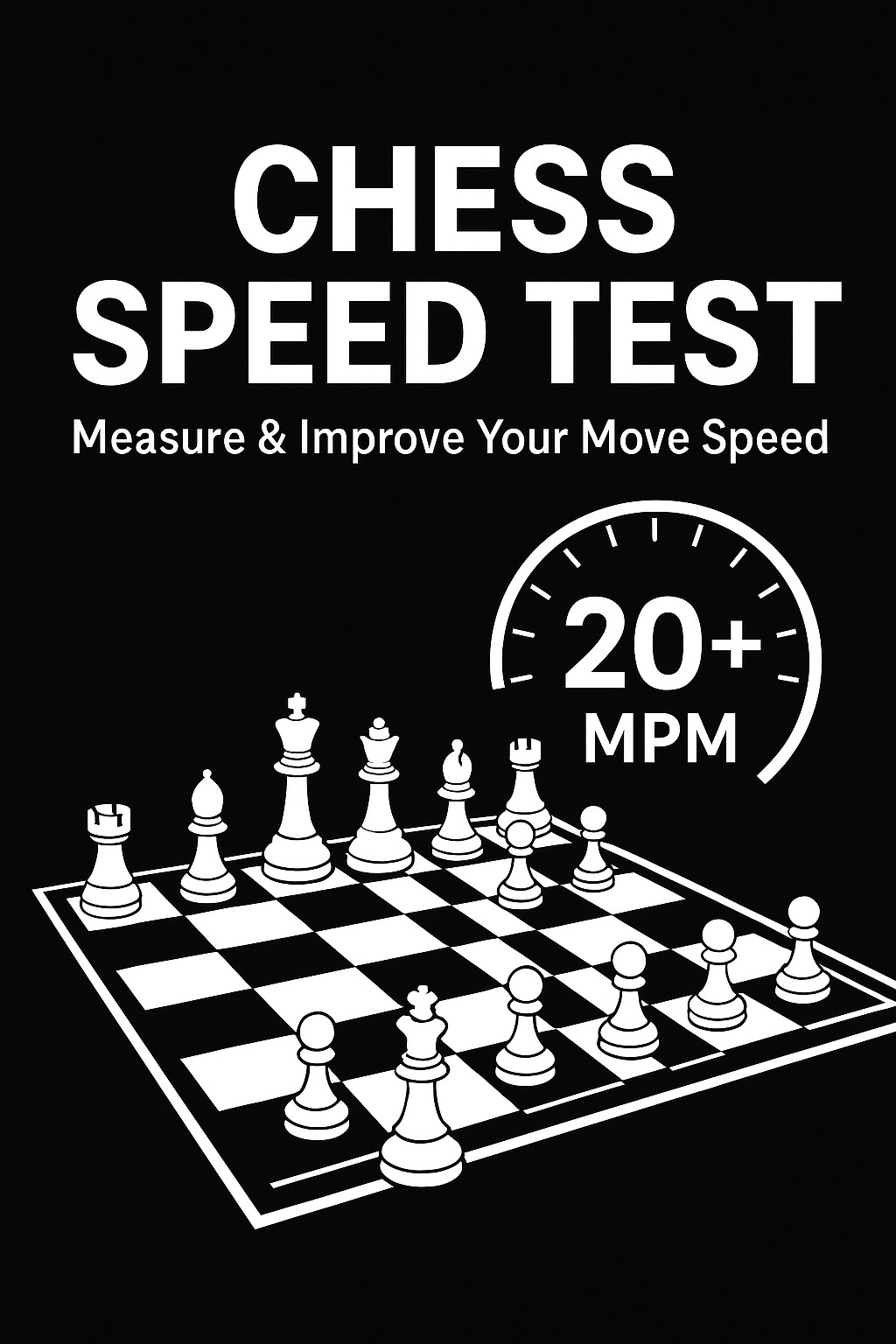Chess Speed Test: How to Measure and Improve Your Move Speed

Chess Speed Test: How to Measure and Improve Your Move Speed
Chess speed is a crucial skill that determines your performance in fast time controls. This comprehensive guide will help you understand, measure, and improve your chess move speed.
Understanding Chess Speed
Chess speed refers to how quickly you can:
- Recognize patterns
- Calculate variations
- Make decisions
- Execute moves
How to Test Your Chess Speed
Method 1: Moves Per Minute (MPM)
- Play timed games and count total moves
- Divide by total time in minutes
- Target: 20+ MPM for bullet, 15+ for blitz
Method 2: Tactical Puzzle Speed
- Solve puzzles with time pressure
- Track average solving time
- Aim for 5-10 seconds per puzzle
Method 3: Opening Speed
- Practice opening lines with timer
- Measure time to reach move 10
- Target: Under 30 seconds for main lines
Factors Affecting Chess Speed
1. Pattern Recognition
- Visual Memory: Recognizing piece patterns
- Tactical Patterns: Spotting combinations quickly
- Positional Patterns: Understanding typical structures
2. Calculation Speed
- Depth: How many moves ahead you calculate
- Breadth: Number of variations considered
- Accuracy: Correctness of calculations
3. Decision Making
- Intuition: Trusting your first instinct
- Risk Assessment: Evaluating position safety
- Time Management: Balancing speed vs. accuracy
Training Methods to Improve Speed
Daily Speed Drills
1. Blitz Puzzle Solving
- Set 5-second timer for each puzzle
- Solve 50 puzzles daily
- Focus on pattern recognition over calculation
2. Opening Memorization
- Practice main lines with timer
- Use spaced repetition techniques
- Test yourself regularly
3. Endgame Speed
- Practice basic checkmates with timer
- Master king-pawn endgames
- Learn theoretical endgames
Weekly Training Plan
Monday: Tactical puzzles (1 hour)
Tuesday: Opening study (1 hour)
Wednesday: Blitz games (1 hour)
Thursday: Endgame practice (1 hour)
Friday: Speed puzzle solving (1 hour)
Weekend: Tournament games
Advanced Speed Training
1. Pre-move Practice
- Anticipate opponent responses
- Practice common patterns
- Use in online games
2. Time Pressure Training
- Play with shorter time controls
- Gradually reduce time limits
- Practice flagging techniques
3. Mental Preparation
- Visualization exercises
- Concentration training
- Stress management
Measuring Improvement
Track these metrics:
- MPM in games: Target 20+ for bullet
- Puzzle solving time: Aim for 5-10 seconds
- Opening speed: Under 30 seconds to move 10
- Win rate: Should improve with speed
Common Speed Training Mistakes
- Sacrificing accuracy for speed
- Not practicing under time pressure
- Ignoring pattern recognition
- Over-calculating in fast games
Tools for Speed Training
- Chess.com: Blitz and bullet games
- Lichess: Puzzle storm and puzzle streak
- ChessBase: Opening training
- Chess Speed App: Dedicated speed training
Conclusion
Improving chess speed requires consistent practice, proper training methods, and patience. Focus on pattern recognition, practice under time pressure, and track your progress regularly.
Remember: Speed without accuracy is useless. Always prioritize correct moves over fast moves.
Ready to Test Your Speed?
Now that you know how to measure and improve your chess speed, it's time to put theory into practice! Our Chess Speed Trainer provides the perfect platform to test and develop your move speed with:
- Real-time speed testing with customizable time controls
- Instant feedback on your moves per minute
- Progress tracking to monitor your improvement over time
- Speed challenges to push your limits
Don't just read about chess speed - experience it! Start your speed training journey today.
Ready to Practice?
Put your knowledge to the test with our Chess Speed Trainer. Practice the exact techniques described in this article with real-time feedback and progress tracking.
Start Training NowChess Speed Team
Chess training expert and content creator